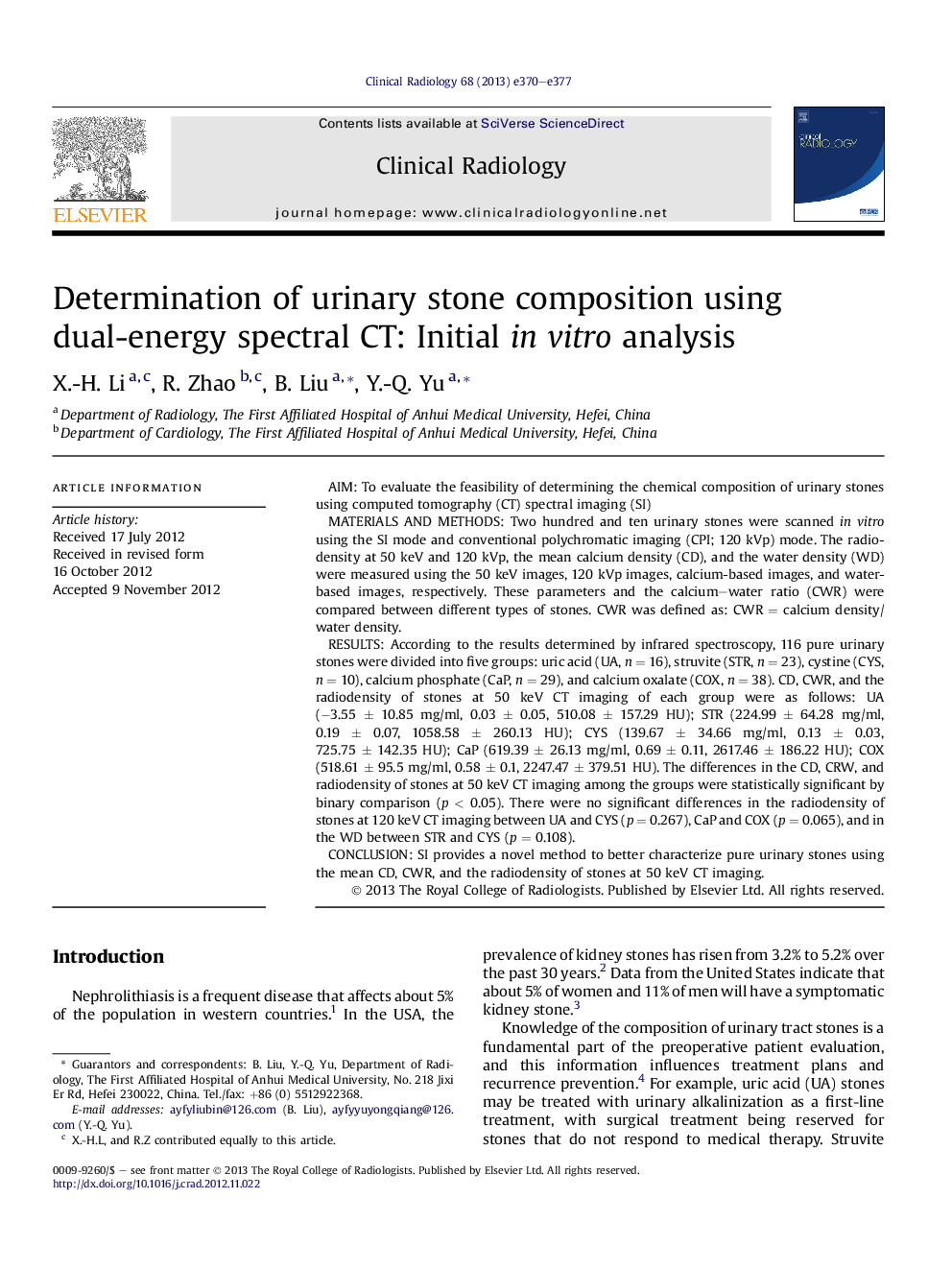| Article ID | Journal | Published Year | Pages | File Type |
|---|---|---|---|---|
| 3982488 | Clinical Radiology | 2013 | 8 Pages |
AimTo evaluate the feasibility of determining the chemical composition of urinary stones using computed tomography (CT) spectral imaging (SI)Materials and methodsTwo hundred and ten urinary stones were scanned in vitro using the SI mode and conventional polychromatic imaging (CPI; 120 kVp) mode. The radiodensity at 50 keV and 120 kVp, the mean calcium density (CD), and the water density (WD) were measured using the 50 keV images, 120 kVp images, calcium-based images, and water-based images, respectively. These parameters and the calcium–water ratio (CWR) were compared between different types of stones. CWR was defined as: CWR = calcium density/water density.ResultsAccording to the results determined by infrared spectroscopy, 116 pure urinary stones were divided into five groups: uric acid (UA, n = 16), struvite (STR, n = 23), cystine (CYS, n = 10), calcium phosphate (CaP, n = 29), and calcium oxalate (COX, n = 38). CD, CWR, and the radiodensity of stones at 50 keV CT imaging of each group were as follows: UA (−3.55 ± 10.85 mg/ml, 0.03 ± 0.05, 510.08 ± 157.29 HU); STR (224.99 ± 64.28 mg/ml, 0.19 ± 0.07, 1058.58 ± 260.13 HU); CYS (139.67 ± 34.66 mg/ml, 0.13 ± 0.03, 725.75 ± 142.35 HU); CaP (619.39 ± 26.13 mg/ml, 0.69 ± 0.11, 2617.46 ± 186.22 HU); COX (518.61 ± 95.5 mg/ml, 0.58 ± 0.1, 2247.47 ± 379.51 HU). The differences in the CD, CRW, and radiodensity of stones at 50 keV CT imaging among the groups were statistically significant by binary comparison (p < 0.05). There were no significant differences in the radiodensity of stones at 120 keV CT imaging between UA and CYS (p = 0.267), CaP and COX (p = 0.065), and in the WD between STR and CYS (p = 0.108).ConclusionSI provides a novel method to better characterize pure urinary stones using the mean CD, CWR, and the radiodensity of stones at 50 keV CT imaging.
